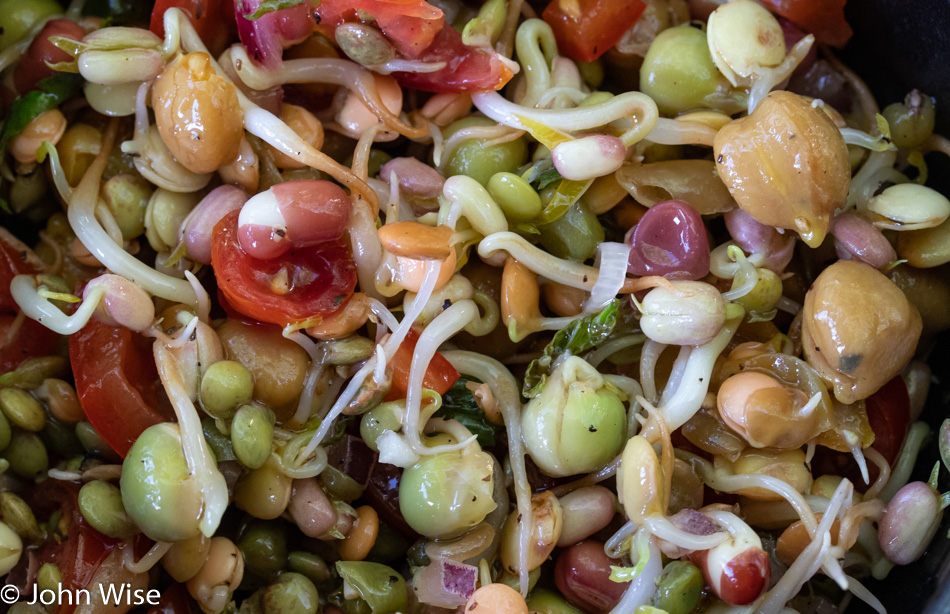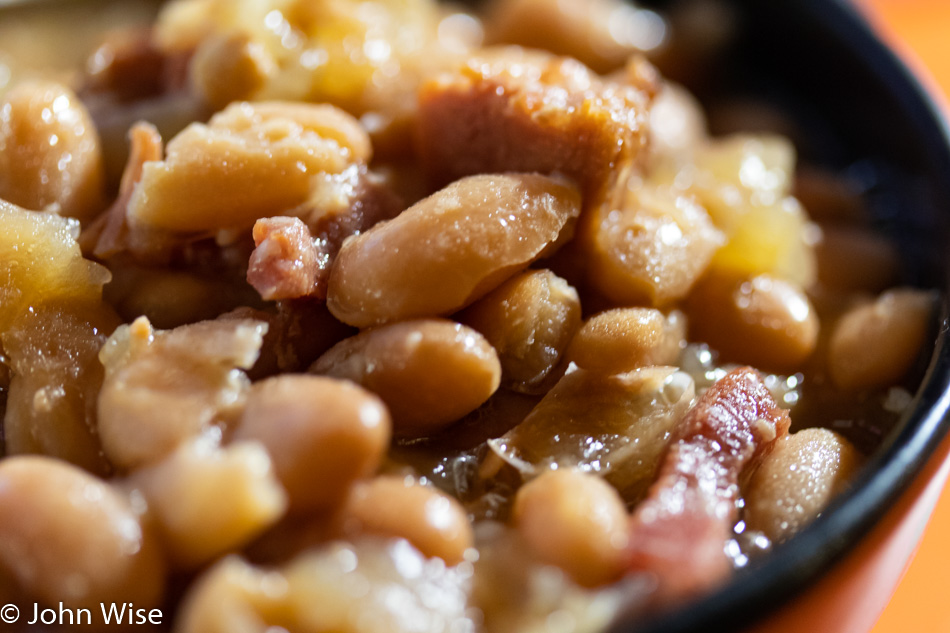
It only seems fitting that our march into Beanistan begins with the bean that is the reason we are in this predicament: Corona. The origins of the corona bean begin in Mexico but it was then bred in Italy where it was crowned the king of beans. Actually, this last claim about the royalty thing is me taking creative license, yet if it were up to me, I’d call it the king. But the origin of a bean is not why I’m here, starting a series of blog posts about these vegetables. I’m here because of COVID-19 aka., the Coronavirus. You see, we can’t travel and due to the uptick in infections not only here in Arizona, but across America, we’re not going anywhere. Heck, we’re not even comfortable going to the store. I needed something else to do so I’ve created Beanistan and I’m your tour guide.
And so it is the mighty corona bean that will lead us into this pulse-inspired travel narrative. Such a monster-sized bean requires quite the effort to prepare, starting with soaking 8 ounces (225 grams) of them overnight. This morning around 8:30 I started the beans simmering until shortly before dinner, so I’d say they were on a gentle boil for about 9 hours. I tried them at 7 hours and they were still a bit mealy but after a couple more hours they were creamy and had arrived at yummy. I made a North African sauce that is like a kind of pesto, it’s called chermoula. Here’s the recipe:
1 teaspoon cumin seeds, toasted
1 teaspoon coriander seeds, toasted
1 cup cilantro
1 cup Italian parsley
1 teaspoon fresh ginger (a thin slice about the size of a quarter)
1 teaspoon fresh thyme (optional)
2 garlic cloves
½ cup olive oil
Zest from 1/2 lemon (about 1-2 tsp)
2 tablespoons lemon juice
1/4 teaspoon Aleppo chili flakes – add more for more heat
1/4 teaspoon salt
Toast seeds in a dry skillet over medium heat, stirring until fragrant and golden. Add all ingredients to a food processor and pulse until well combined, but not too smooth.
It’s that easy. We didn’t have any ginger on hand so we skipped that and don’t feel we missed a thing and can make this claim as we first tried these beans with chermoula a few weeks ago and fell in love with them. The first time we made them I started with 12 ounces of the dry beans and we ended up having enough for two days. Starting with 8 ounces it turned out to be a perfect portion for the two of us. Oh, and because we knew how amazing these relatively hard-to-find beans are, we bought another 6 pounds of them about two weeks ago bringing us up to just under 9 pounds in our pantry.
Because you’ll never guess it from the photo of our corona bean dish I thought I’d share some statistics about it. The cooked beans weighed in at 18.5 ounces (516 grams) up from 8 when they were dry. Each bean is over 1.5 inches long or 3.5cm and weighs 3 grams, for stoners: a little more than 9 cooked beans weigh as much as an ounce of weed.
Someday I’ll look back at 2020 and remember that this was the year I pivoted from writing about the aesthetics of nature and Old World churches to writing about fart-inducing legumes and the pleasures they can bring to those trying to entertain themselves during a plague.





